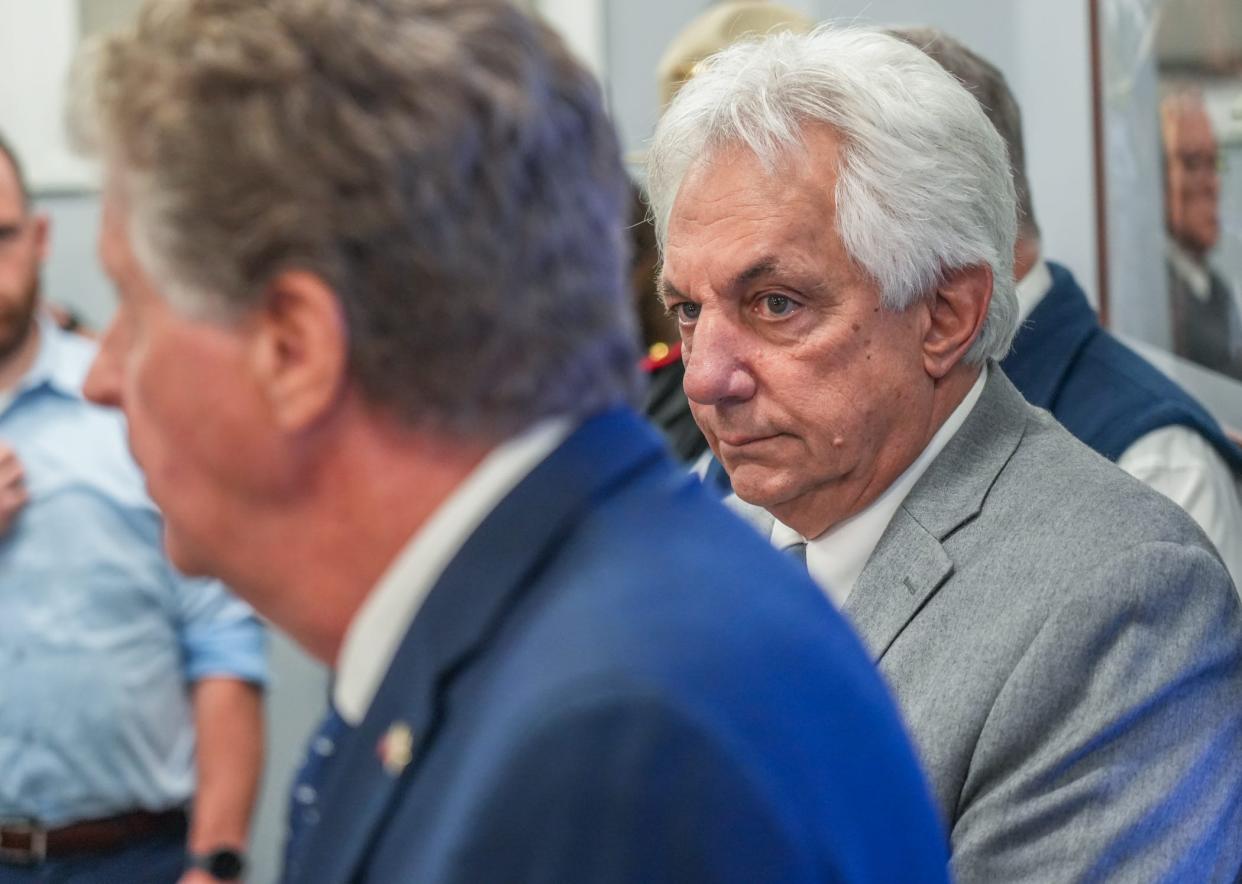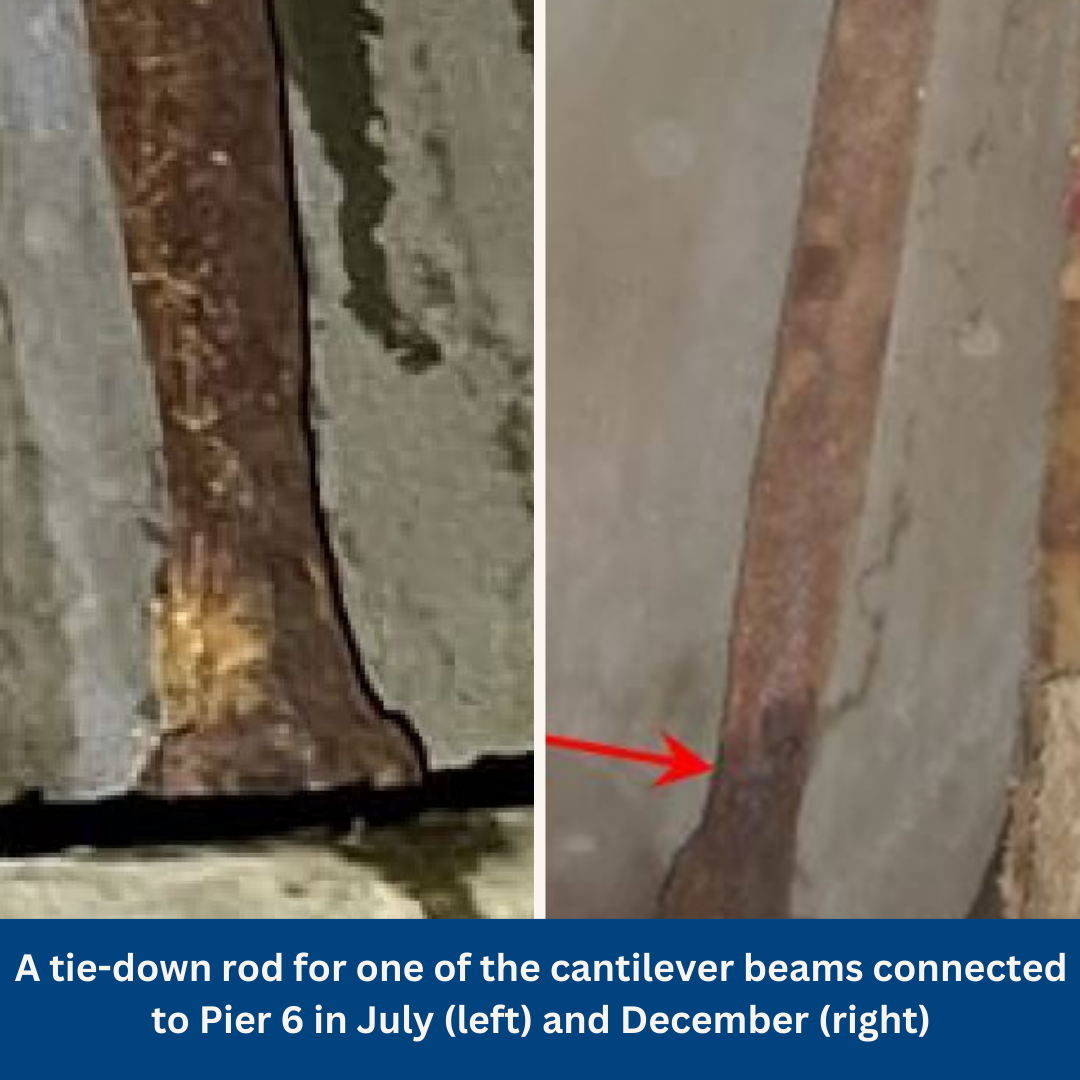Was there 'necking' on bridge rods and should it have been caught? RIDOT backpedals on answer
PROVIDENCE – More than two weeks after Rhode Island Department of Transportation Director Peter Alviti appeared on camera at a State House hearing to answer legislators' questions about the closed westbound lanes of the Washington Bridge, he admitted: he misspoke.
Then again, maybe not.
Necking or no necking? That is the question
One of the recurring questions from legislators at that Feb. 12 joint House-Senate oversight hearing had to do with narrowing – also known as "necking" – of the rods holding the beams of the bridge to its piers over the Seekonk River.
Asked that night if the narrowing of some tie-down rods to 1 inch in diameter and the severing of others had happened between the last annual inspection in July 2023 and December, when the bridge was abruptly closed, Alviti said: "No, I don't believe so."
"The necking showed up in previous reports, but it never rose to a level of concern of being a critical finding," he said.

RIDOT says Alviti misspoke
The next day, The Journal asked the DOT several follow-up questions, including asking them to pinpoint when and where this sign of deterioration was first identified and provide the evidence, and clarify who did not elevate that deterioration to a "critical finding." DOT spokesman Charles St. Martin said the department would "need several days to review earlier inspection reports.
Pressed to respond to these two-week-old questions on Wednesday, St. Martin told The Journal: "The director misspoke. "
"While it was his estimation that the necking seen in [December] 2023 must have occurred earlier, in our review of inspection reports, necking issues were not noted," St. Martin said.
"We reviewed the inspection narratives and photos dating back to 2020, posted on the RIDOT website, and could not identify any evidence of issues with necking," St. Martin said.
Was it ever mentioned? "We were unable to find a reference to this in the inspection reports ... As this was not indicated in the inspection reports, it would not have been elevated to a critical finding."
Expert contacted by The Journal saw necking on the rods
Asked to define "necking" as Alviti used the term, St. Martin said: "Necking is a reduction in the diameter of a shaft or rod."
While Martin's definition does not reference what causes necking, at the hearing Alviti spoke about the role that tension plays in the necking of steel rods.
Such tension is a defining characteristic of the type of "necking" that Prof. Barzin Mobasher of Arizona State University cited after he looked at photos of some tie-down rods on the Washington Bridge.
Asked to look at the publicly available material for The Journal, Mobasher said the inspection photographs showing the narrowed rods on the Washington Bridge were “textbook” exhibits of necking.

In the July 2023 photos, the rods appeared stressed and stretched way beyond allowable engineering design, he said. And even at that point, before the rods were visibly broken, the necking was sufficient evidence of failure, he continued, using an even broader definition of necking than Alviti used.
“That’s enough,” Mobasher said.
As to why the necking was never seen or identified by RIDOT's staff and hired inspection teams as a concern, St. Martin said the DOT "look(s) forward to the results" of a forensic analysis of the "condition of the bridge and its components over time." The results of the that analysis are expected sometime between now and early March, which begins Friday.
Did Alviti actually misspeak?
There's more.
Pressed further on what the DOT's staff and hired inspectors reported before 2020, St. Martin told The Journal on Thursday: the DOT asked its own "engineers to look through the inspection reports prior to 2020, as you asked, back as far as 2015."
"None of the inspection photo captions and graphics call out necking, but anchor rods are present in some images and some necking appears to be present," he said.
What, then, was Alviti's "misspeak"?
"The director apparently did not misspeak; he just misunderstood the question," St. Martin said. "He said it is apparent from these photos that there are pictures of the tie rods dating back to at least 2015. "
Forensic report should provide more detail
Sen. Mark McKenney, chairman of the Senate's oversight committee, echoed that sentiment when told of Alviti's turnabout on what was and was not reported to the DOT by its staff and its hired bridge inspectors.
Structural cascade: Broken rods were just a symptom of RI's Washington Bridge crisis
"The forensic report and the other assessments being done will likely provide us with much additional information to consider," he said.
"Many statements were made at the recent hearing. We’ll be looking at what was said, and seeing how it comports with the evidence that’s being developed or coming to light. Right now, though, a comment would be premature," he told The Journal.
Reporter Mark Reynolds contributed to this story.
This article originally appeared on The Providence Journal: RIDOT director flip-flops on Washington Bridge rod necking in inspections
